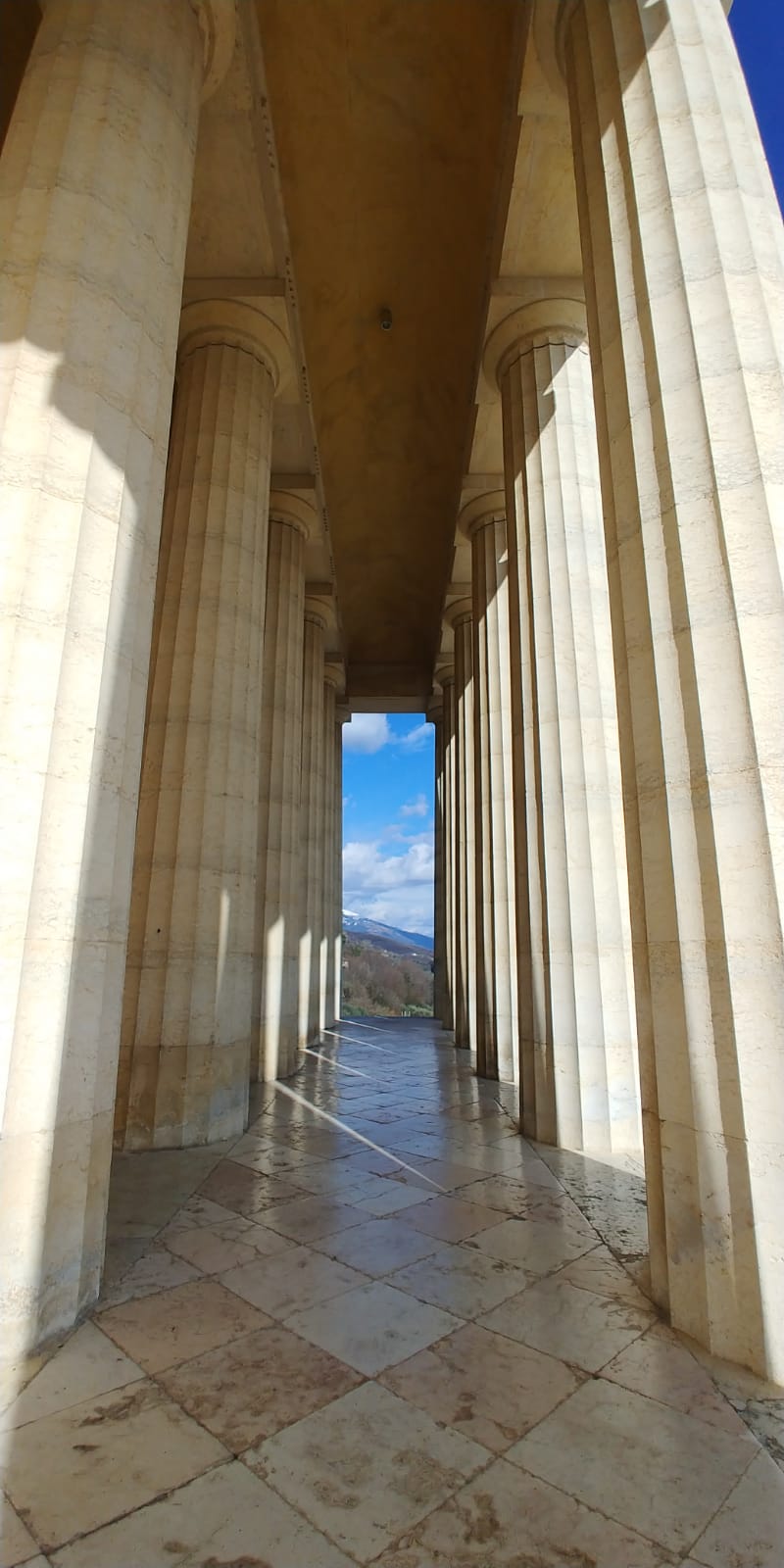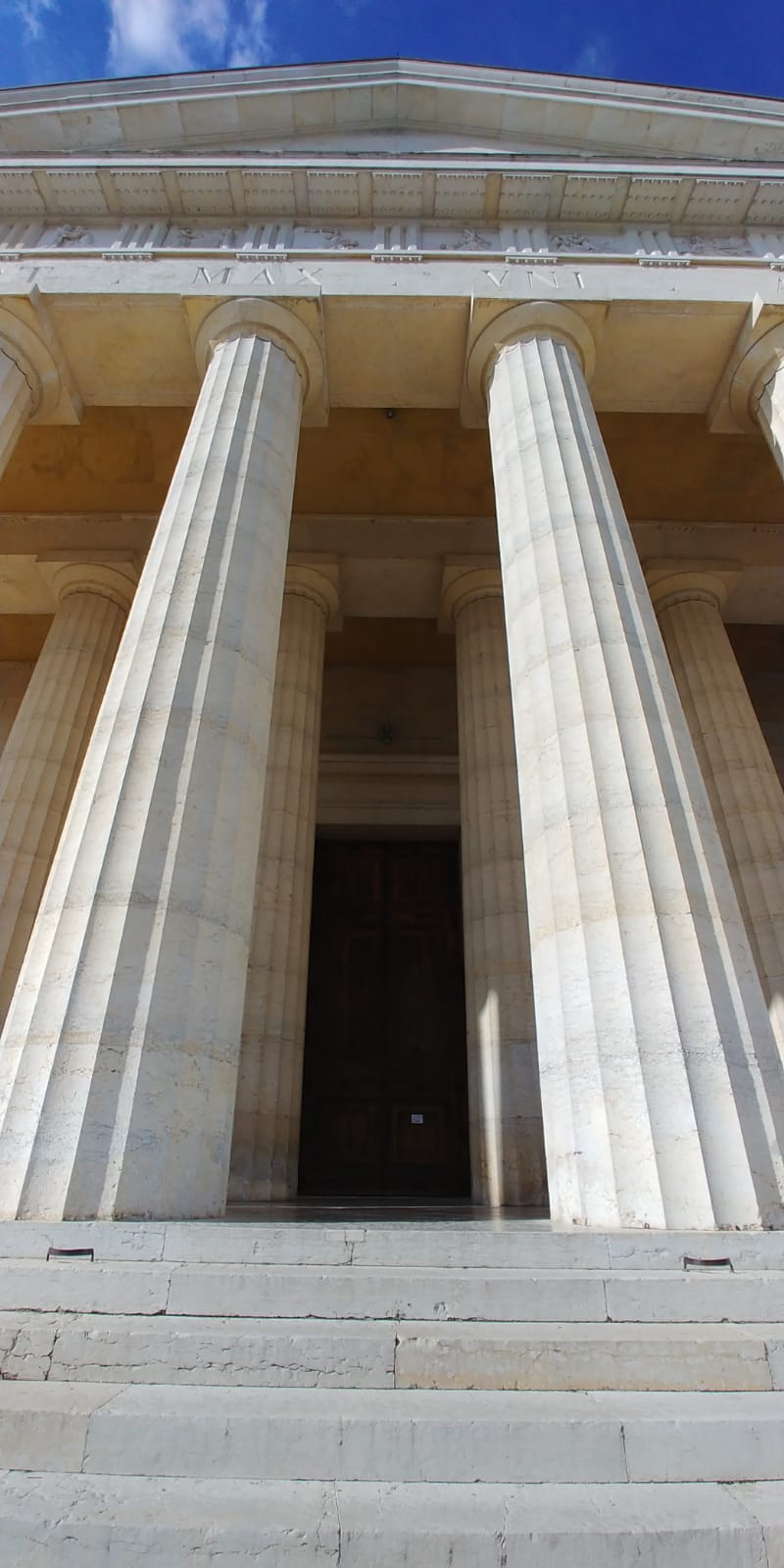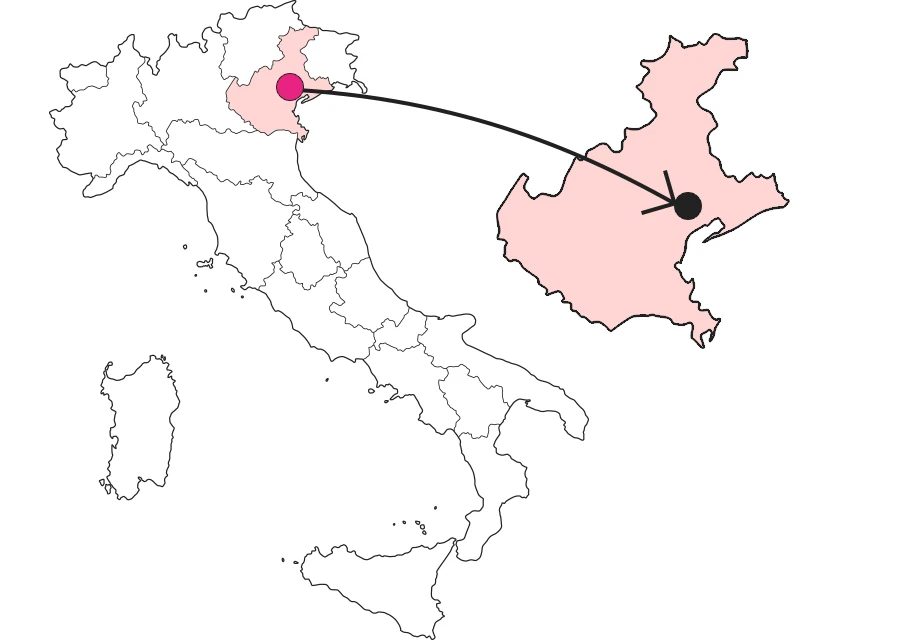




Where

What it is and where it is
It is one of the symbols of neoclassicism, this monumental structure, a candid lookout over the Treviso hills. The architectural design is reminiscent of the Roman Pantheon: the main body, round and surmounted by a coffered dome with a central oculus, is preceded by a columned pronaos. Imposing and massive Doric columns support a band of metopes and triglyphs, on which the pediment tympanum rests. Inside the temple we can discover works by various artists, but also, the tomb of Canova, accompanied by his own self-portrait.
Why it is special
This sacred, spiritual and imposing place, in its majestic simplicity, exalts and enhances the area in which it is located and is identified with a complete and multifaceted artist like Canova. This should not come as much of a surprise, since it was the sculptor himself who designed the temple, laid its foundation stone in 1819, and donated it to the Possagno community. However, we also have to thank Canova's brother, Msgr. Giovan Battista Sartori, that we have the opportunity to admire this marvel today: it is he who continued the work for a good 10 years after his illustrious brother's death in 1822.
Not to be missed
A few meters from the temple is the Gipsoteca and Birthplace of Antonio Canova: it is not only a place of inestimable beauty but also the largest collection of monographic plaster casts in Europe. The house also houses a collection of paintings that Canova made between 1798 and 1800, in which the artist's sculptural ideas take shape in an alternative method. Also interesting and exciting is the new interactive area dedicated to World War I: new technologies and history give light to an immersive and engaging experience.
A bit of history
The design of the temple required Canova several years of study: the idea took shape in 1804 but the project was completed in 1818, thanks to the help of Pietro Bosio and Luigi Rossini and the advice of Giannantonio Selva and Antonio Diedo. Construction began in 1819 and was supported by the will of Canova and the citizens of Possagno, who offered free building materials and labor. The artist died of 1822. Ten years later the temple was finally inaugurated thanks to his brother, Msgr. Giovan Battista, who thought it fitting to lay Antonio's body inside his last, great work.
Trivia
Historians tell that Canova's body, after his death, was dismembered into 3 parts: the heart, the seat of the artist's soul, was extracted and given to the Serenissima, which still preserves it inside the Church of Santa Maria Gloriosa dei Frari; the instrument of his art, the right hand, recently reunited with the rest of the body, was taken to the Academy of Fine Arts in Venice to inspire young artists; and the rest of the body was sent to the old parish church in Possagno even before the temple was completed, where it found its final resting place.
Enter the Map of Italy's Undiscovered Wonders and find treasures where you least expect it... Inspire, Recommend, Share...
Contacts
Collections
It is part of the Land
The Map thanks:
In the Community
Enter the Map of Italy's Undiscovered Wonders and find treasures where you least expect it... Inspire, Recommend, Share...
Where

Contacts
Collections
It is part of the Land





